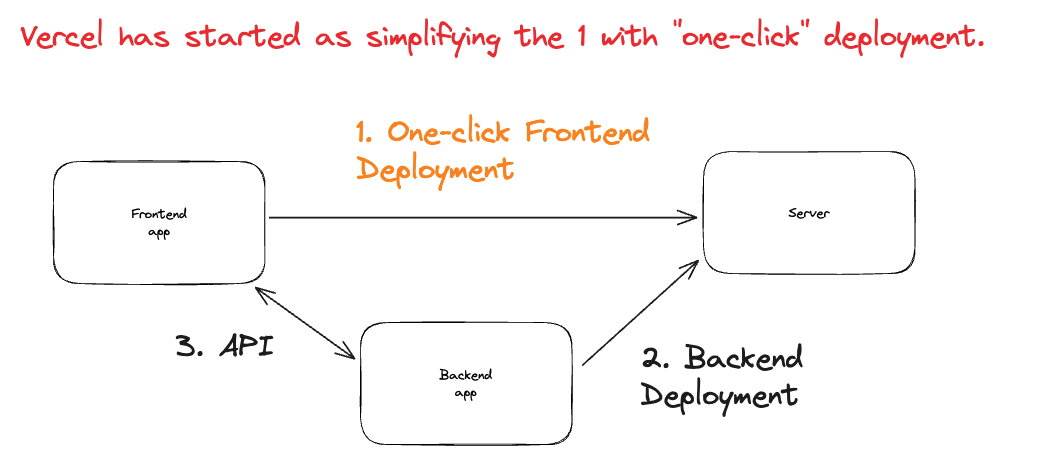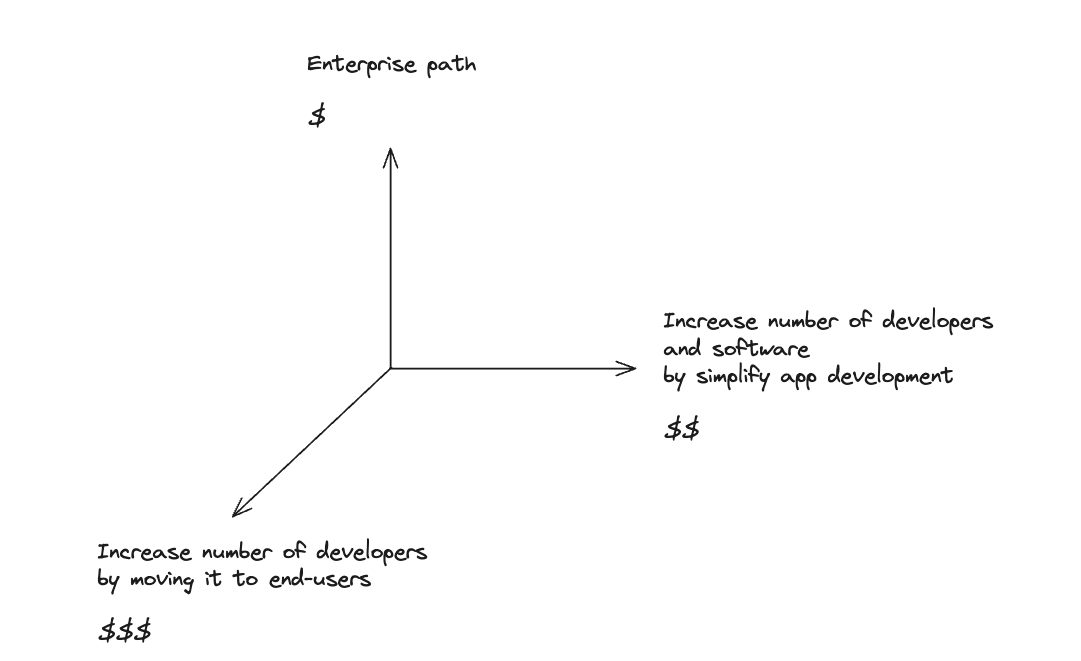The Arc of Deployment: How Vercel is Redefining the Game
Web development has long been a realm of distinct disciplines: frontend and backend, with APIs serving as a connective corridor. This structure, reminiscent of a classical dichotomy, was functional and effective for its time.
Vercel emerged with a concept that challenged this traditional separation: simplifying frontend deployment to a single-click process. This approach streamlined what was once a multi-step task, emphasizing efficiency and automation in deployment.

The Next.js Revelation
Next.js emerged as a pivotal development, redefining the boundaries between frontend and backend. It merged these two traditionally separate areas into a cohesive, integrated application. This shift was more than a technological leap; it represented a new philosophy in web development, altering the client-server dynamic.

Design and Intelligence: The New Collaborators
Vercel’s strategy involved a deep integration of design systems like shadcn and AI tools like v0.dev. Recognizing these tools as not just supplementary but essential, Vercel harnessed them to transform the interface development process, enhancing both efficiency and creativity.
Where Does Vercel Go Next?
Vercel’s potential trajectories are diverse and intriguing:

- The Steady Enterprise Path: Focusing on stability and gradual improvements, catering to enterprise needs.
- The Developer’s Pathway: Strengthening bonds with the developer community by integrating v0.dev with environments like Visual Studio, enhancing the development experience further by extending developer suite.
- The Democratization of Programming: Pioneering a more inclusive approach, aiming to make programming accessible to a wider audience through AI and intuitive interfaces by replacing tools like Retool or Framer in the long term.
A Stroke of Genius?
What might seem audacious is, on closer inspection, the logical next step. Vercel has already distilled deployment down to its essence. They began with templates, a firm foundation that charted the course for developers. But now, they’re at the cusp of weaving more AI magic into the very fabric of these templates.
Now, they’re poised to do the same with creation itself. Imagine an ecosystem where “v0.dev + businesslogic.dev + vercel deployment” becomes not just a framework, but a living spell—where the invocation of these elements conjures working software from the void, as if by some digital alchemy.
In Conclusion
Vercel’s journey reflects a common theme in the evolution of technology: the unyielding pursuit of simplicity. Their story is one of empowerment, transforming the once lofty domain of digital creation into a realm accessible to all. Vercel is not just offering tools; they are offering possibilities—the potential for anyone with an idea to bring it to life.
As we observe this evolution, a compelling question arises: which path will Vercel choose? The safe harbor of enterprise stability, the familiar terrain of developer-focused enhancements, or the uncharted waters of democratizing programming? Or, perhaps more daringly, will Vercel venture to combine all three paths?
Embracing all three trajectories could be a bold, unprecedented move, blending stability with innovation and inclusivity. It’s a decision that could redefine not only their future but also the landscape of web development and digital creation.